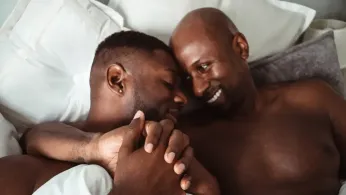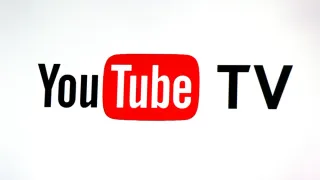
4 hours ago
Queer Sex Myths To Leave Behind in 2026: Real Talk, Real Lives
READ TIME: 4 MIN.
Queer folks have spent too long living under the shadow of someone else’s expectations—especially when it comes to sex. From high school health classes that forgot we exist, to the TV tropes that paint our relationships with a single brush, the myths have been relentless. But 2026 is the year we’re throwing those tired misconceptions out and lighting up the dancefloor with real stories, real pleasure, and real pride.
This isn’t just a listicle; it’s a reclamation. Every myth we retire is a step toward self-acceptance, sexual agency, and the joy of intimacy on our own terms. So, let’s start by confronting the biggest offenders.
Myth #1: “Queer” Means “Gay”—And That’s It
If you’ve ever been told that being “queer” just means “gay,” you know how limiting that feels. Queerness is a beautifully messy umbrella—home to identities that defy binaries, roles, and rigid definitions. We’re not just “gay,” we’re bisexual, pansexual, asexual, demisexual, and more. Queer is about diversity, fluidity, and self-definition, not a one-size-fits-all label .
Myth #2: Bisexuals Are “Confused” or Not Really Queer
The tired narrative that bisexual people are “just confused” or “not gay enough” is not only biphobic—it’s simply false. Bisexuality is valid, and bisexual people’s attraction to multiple genders is not up for debate or diagnosis. As Roxy puts it, “The idea that bisexual people are just confused is an outdated, biphobic stereotype… It doesn’t begin to reflect the reality of human sexuality, which is gloriously diverse.”
Myth #3: Asexual People Just Need to Meet “The Right Person”
Asexuality isn’t something that needs “fixing.” Asexual people feel little or no sexual attraction, and it’s not about waiting for a magical soulmate to unlock hidden desire. This myth is not only inaccurate, it’s dismissive of asexual people’s lived experiences .
Myth #4: Polyamory Is Just About Casual Sex
Polyamorous relationships are often misunderstood as endless hookups or emotional chaos. The truth? Polyamory is about building meaningful, romantic, and sexual bonds—with communication, respect, and consent. It’s not a loophole for drama; it’s a legitimate relationship model that works for many in the queer community .
Myth #5: Lesbian Bed Death Is Real
The infamous “lesbian bed death” trope—the idea that lesbian couples lose interest in sex—has been widely debunked. Sexual activity varies in every relationship, and many lesbian partners remain just as (if not more) intimate as their straight and gay counterparts. The reality? Every couple writes their own love story .
Myth #6: Gay Men Have “Wild” Sex Drives
No, not every gay man is a sex machine. The spectrum of desire is as broad as any other community—some like frequent hookups, others prefer intimacy within relationships, and some may not prioritize sex at all. Stereotypes do nothing but flatten the richness of real lives .
Myth #7: Queer Sex Is Radically Different From Straight Sex
If you’ve ever heard that queer sex is “totally different,” you’re missing the point. Queer intimacy includes hooking up, making out, fighting, making up, experimenting, and growing close—just like any other relationship. Our sex lives aren’t an alien world; they’re simply human .
Myth #8: PrEP Means Condom-Free—And HIV Is No Longer an Issue
While PrEP (pre-exposure prophylaxis) has been a medical game-changer, it doesn’t mean condoms are obsolete or that other STIs have vanished. HIV remains a concern, especially for marginalized groups like trans women. Protection, testing, and informed choices remain essential .
Myth #9: LGBTQ+ Relationships Don’t Last
The belief that queer relationships are short-lived or inherently unstable is contradicted by science and lived experience. While external challenges—like homophobia and societal pressure—can impact relationships, LGBTQ+ couples find love, build families, and form deep, lasting bonds just as anyone else does .
Myth #10: Homosexuality Is “Western” or “Modern”
LGBTQ+ identities are not a recent invention or Western export. Queer people have existed in every culture, across centuries, and throughout history. Erasing those histories is a political act—but reclaiming them is queer power .
Myth #11: Queer Porn Doesn’t Exist—and Trans Women Only Have Sex Like in Porn
Representation matters—and queer porn, including work by and for trans creators, is thriving. Porn is fantasy, not reality. Actual sex is about agency, pleasure, and negotiation, not scripts or stereotypes .
Myth #12: Intersex Is Just Another Word for Transgender
Intersex people are born with biological traits that don’t fit typical definitions of male or female. Intersex is not synonymous with being transgender. Both identities deserve respect, visibility, and their own narratives .
Myth #13: You Have to “Come Out” To Be Truly Queer
Coming out is a personal journey, not a requirement. Safety, comfort, and control over your story matter more than public declarations. Queerness is valid, whether shouted from the rooftops or quietly lived .
Myth #14: LGBTQ+ People Are “Flaunting” Their Sexuality
Visibility isn’t “flaunting”—it’s living authentically. Holding hands or showing affection is normal, and queer couples face double standards that force many to hide rather than celebrate their love. Public affection is a right, not a rebellion .
What Retiring These Myths Means for Queer Lives
Shedding these myths is more than a feel-good exercise; it’s a collective act of liberation. When we challenge falsehoods, we make room for honest sex education, mental health, and the full spectrum of queer joy. It means queer youth can grow up with role models who reflect their experiences. It means relationships can thrive without shame or secrecy. And it means all of us—regardless of our letters in the LGBTQIA2+ alphabet—can find connection, pleasure, and pride.
Queer Wisdom for 2026 and Beyond
As we retire these myths, let’s replace them with truths:
- Sexuality is gloriously diverse.
- Queer relationships are as rich, complicated, and enduring as any other.
- Sex is about connection, not labels.
- Self-acceptance is the ultimate turn-on.
So here’s to 2026: the year queer sex myths get kicked to the curb, and real, joyful, radical love takes their place.






